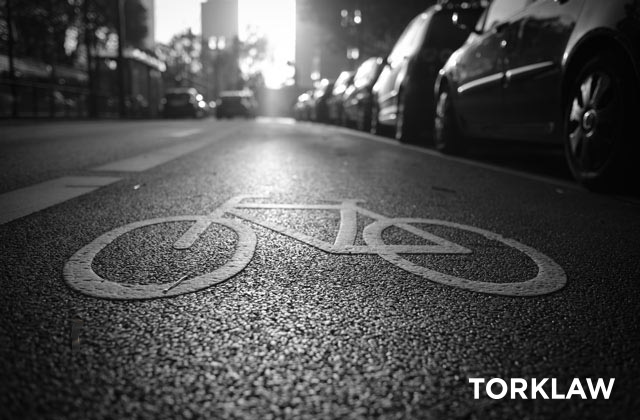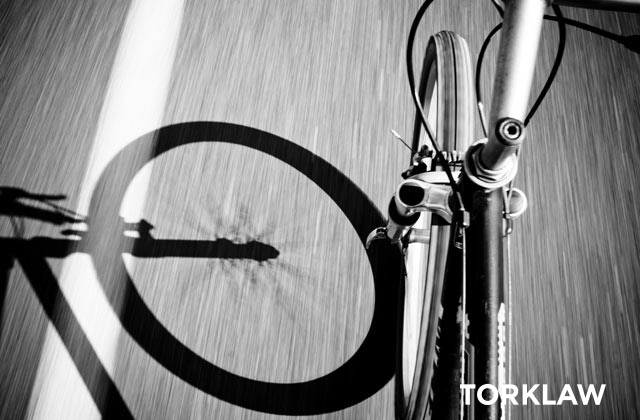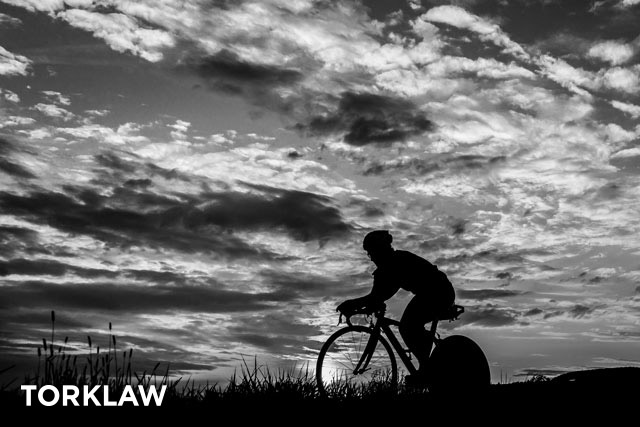Since 1956, the League of American Bicyclists has been celebrating National Bike Month in May as a chance to showcase the benefits of bicycling, and to encourage more folks to give biking a try.
Benefits of Cycling
Bicycling is a great sport for almost anyone. It’s an aerobic workout, which benefits cardiovascular health and combats heart disease and high blood pressure.
Bicycling is also easy and appropriate for all fitness levels, and there are bicycles for many ability types. It’s low-impact and good for joint health, and helps with balance and stamina. Cycling builds muscle in the legs, butt, abdominals, and arms, and builds bone strength. It also aids in weight management.
Like many physical activities, cycling improves your mood. A 2011 study showed that exercising outdoors results in greater energy and positive feelings than exercising indoors.
Choosing to bike to places instead of opting for motor vehicle travel is good for the environment, too: It reduces both traffic congestion and greenhouse gasses.
Safe Riding
It’s important to know the bicycle laws in your area and practice safe cycling to avoid the risk of a bicycle accident, which can result in catastrophic injuries or even death.
Bike Laws
Most U.S. states have a listing of cyclists’ rights and responsibilities in their vehicle codes. While there is variance between states, in general, bicyclists have the same rights and responsibilities as motor vehicle operators, except where traffic laws explicitly state otherwise. Check your local bicycle laws to confirm these common regulations:
- You must ride your bicycle with the flow of traffic; in other words, you should not ever ride into oncoming traffic.
- If you’re moving slower than the flow of traffic, you must stay as far to the right as reasonably possible, or in a designated bicycle lane, unless you need to make a left turn, or move around an obstruction or slower cyclists.
- You may be restricted from cycling on highways or roadways where traffic would pose a risk to cyclists.
- Your bicycle must have a braking system.
- Cyclists must stop at all stop signs and stop lights; however, some states allow bikes to make an “Idaho stop” at stop signs – that is, to treat a stop sign as a yield sign (slow down and prepare to stop or yield the right of way if there is opposing traffic), and a red light as a stop sign (come to a complete stop, check for traffic and pedestrians, and proceed when you have the right of way).
- Most states and cities prohibit bicycling on the sidewalk, although there may be exceptions for younger children. You also can’t leave a bicycle on a sidewalk or pedestrian walkway in a way that creates an obstacle.
- Bikers must always yield to pedestrians.
- If cycling at night, you must have red lights on the back and white lights on the front, as well as white reflectors on the front and red reflectors on the back.
- If your bike is not equipped with lit turn signals, you must use the proper hand signals when turning, changing lanes, or stopping.
- Depending on your age, the law may require you to wear a helmet. Some local ordinances require all bicyclists to wear helmets, regardless of age.
- It’s illegal to cycle while intoxicated or otherwise impaired, and your bike may be impounded if you do.
Other common laws make it illegal for a bike to be towed by a motor vehicle, to be on a moving bike without a seat, to carry an object or package that keeps you from steering or stopping your bike, or wearing headphones that keep you from hearing other vehicles or emergency sirens. You may also need to register your bike and mount tags on it to ride it in public.

Bicycle Safety
In addition to the laws, or whether it is required by the law or not, the following tips are best practices for avoiding injury on your bike:
- If you don’t follow any of the other tips, follow this one: Wear a bike helmet whenever you ride. Studies show that wearing a helmet reduces the risk of serious head injury by nearly 70%.
- Ride with traffic, not against it. Unless you’re riding as fast as normal traffic flow, ride as close to the right shoulder as possible, or in the marked bike lane.
- When riding with others, unless you’re going as fast as normal traffic, ride single file, leaving a safe amount of space between.
- Do not wear headphones while riding.
- Keep both hands on the handlebars, except when signaling.
- Don’t take your feet off the pedals while you’re in motion.
- Wear bright colors and/or reflective material on your helmet and clothes; if cycling at night, be sure you have bright, working lights.
- Use the correct hand signals.
- Stop and look both ways when entering a roadway.
- Prepare before you ride: know your route and the laws in your area, avoid peak traffic times, and ensure that your bike is well-maintained and safe to ride.

Drivers: Share the Road
People on bicycles have the same rights and responsibilities as people behind the wheel of a vehicle. Keep that in mind during National Bike Month, and throughout the spring and summer, when there are likely to be more bikes on the road.
Here are some tips for drivers to safely share the road with bicycle riders:
- Don’t underestimate the speed of oncoming bicycles; avoid turning in front of an oncoming cyclist. Yield as you would to any motor vehicle.
- When parked on the street, always check behind you for oncoming bicyclists or traffic before opening your door.
- When you’re turning right on a green light, slow down and look behind and to your right. Bicyclists riding in the far-right lane, or the bicycle lane don’t have to stop, and may run into you if you don’t yield to their right of way.
- If you see a bicyclist on your route, obey the speed limit, reduce speed for road conditions and drive defensively to avoid a collision.
- Give cyclists room; many states have a 36-inch passing law: you must give a bicyclist at least three feet of space when passing. Keep in mind that in many places, there is no bike lane, and where the road is too narrow to stay in your lane and give the cyclist the required space. Pass bicyclists as you would any other vehicle—when it’s safe to move over.

During National Bike Month, and every month, protect yourself and ride safely on the road. In the unfortunate event that you are injured on your bike, contact the bicycle accident lawyers at TorkLaw. Our attorneys have the skill and experience to help ensure you receive the compensation you deserve, so you can keep cycling.
Did you find this post informative? You may also want to check out the below content:
Bicycling In California: What’s Legal (And What Isn’t)





